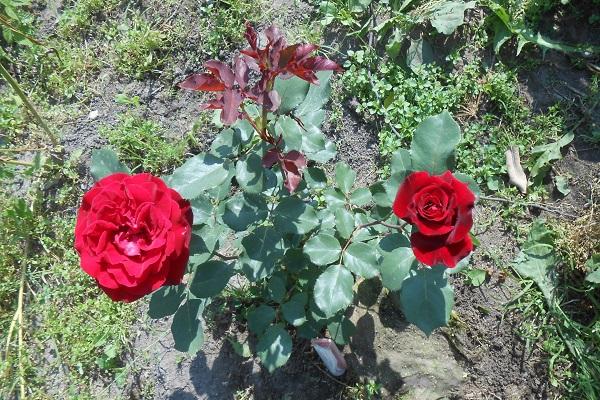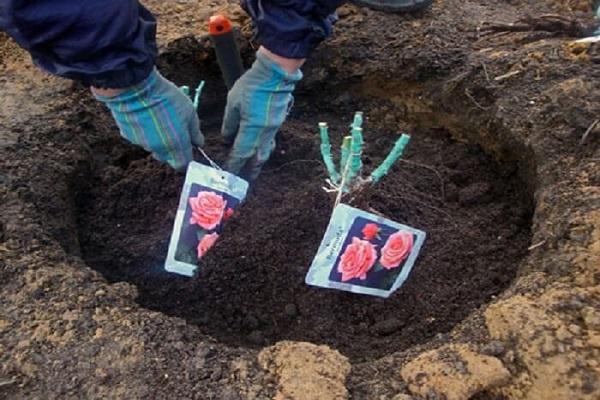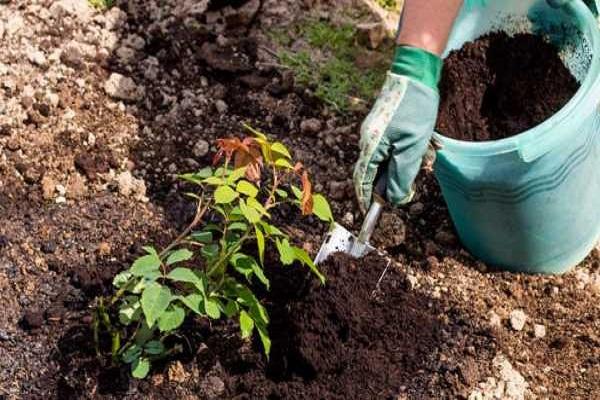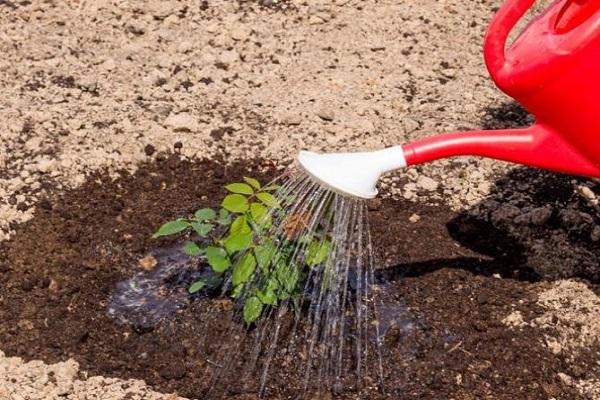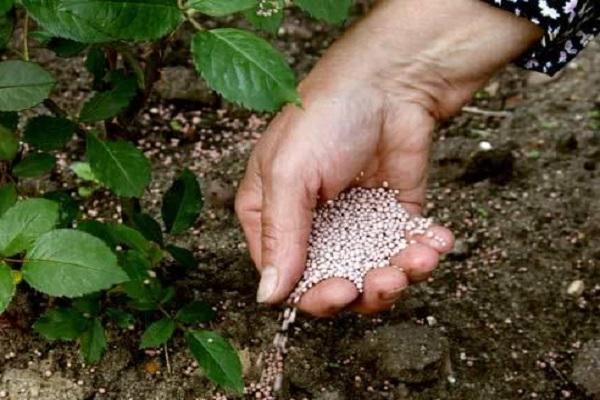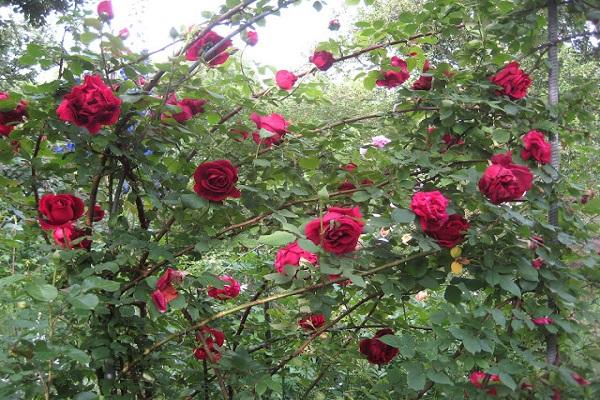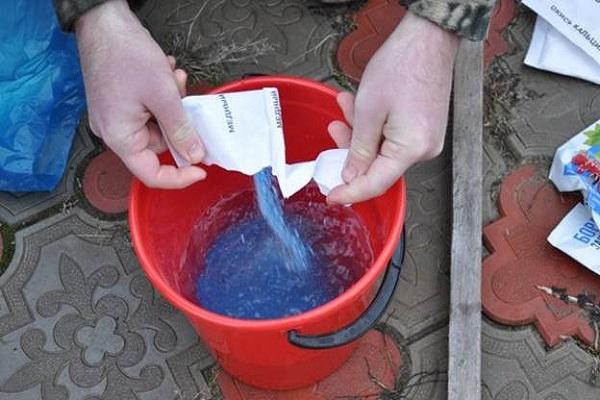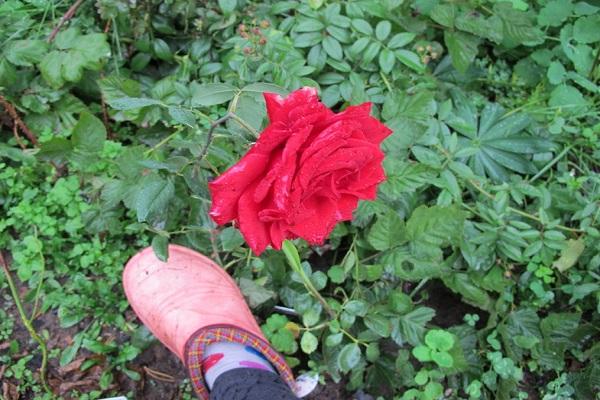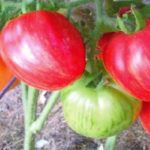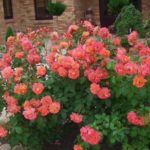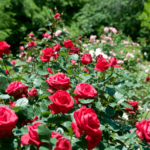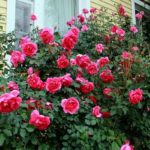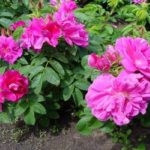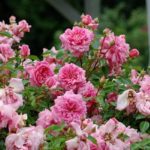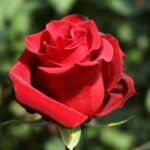Large and bright flowers of the climbing rose Don Juan look original in the landscape design of the garden. The plant is often planted for decorative purposes when designing landscape design on the territory. Standard rules of agricultural technology allow you to grow healthy and actively developing plantings.
- Description and characteristics of the climbing rose Don Juan
- The main advantages and disadvantages of the variety
- Nuances of cultivation
- Landing dates
- Preparation of planting material
- Accommodation
- Landing
- Care instructions
- Watering a rose
- Fertilizer application
- Plant pruning
- Shelters for the winter
- Flowering period
- Diseases, pests and prevention
- Flower propagation methods
- Rosa Don Juan in landscape design
Description and characteristics of the climbing rose Don Juan
The climbing rose of the Don Juan variety grows into a dense bush with large flowers. The stems of the flowers are erect, thickened, 2-2.5 m high, with hard prickly thorns. A characteristic feature of the variety is the color of the stem in two shades.
The cup-shaped flowers reach a diameter of 10 cm and acquire a purple or crimson-red color. With proper care, flowering occurs already in the first year of cultivation.
The main advantages and disadvantages of the variety
When thinking about planting the Don Juan variety, you should familiarize yourself with the main pros and cons. The advantages include the following:
- high resistance to viruses and cold;
- large flowers that can be used to visually hide imperfections on the site;
- unpretentiousness to care and environmental conditions;
- delicate and sweet aroma of flowers;
- long and massive flowering from early summer until October.
In addition to a number of positive qualities, the Don Juan rose has several disadvantages. Their list includes:
- the need to form a support due to the length of the branches up to 3 m;
- complex wintering shelter for vigorous shoots with a dense structure;
- the presence of large prickly thorns on the stems, which complicates the maintenance process and requires the use of special gardening gloves.
Nuances of cultivation
For proper growth and abundant flowering, it is necessary to take into account the nuances of growing the Don Juan variety. Following the rules will help you grow large flowers and prevent a number of difficulties.
Landing dates
The best time to plant the climbing variety Don Juan is early autumn. A rose planted in September-early October manages to take root in a permanent place and take root before severe frosts, and with the onset of spring it continues to actively grow.
Planting in spring is also allowed, from the second half of April to the beginning of summer.But spring planting is less suitable for climbing roses, since they will form inflorescences later and will be delayed in growth. If it is possible to plant plantings only in the spring, then you need to cut the shoots to a height of 15 cm, and leave the length of the roots within 30-35 cm. To protect against return frosts, plants planted in April are covered with film to create greenhouse conditions.
Preparation of planting material
Before transferring the seedling to a permanent place, keep it in warm water for 24 hours. At this time, the ground is prepared for planting. If the rose is planted next to the wall of the house, then the planting hole is dug at a distance of 40 cm from the support. The diameter of the pit is 60 cm, the depth is 30 cm.
A small amount of planting mixture consisting of turf soil, peat and bone meal is poured into the bottom of the hole. If planting on slightly enriched soil, it is recommended to add an additional bucket of humus or rotted compost.
Accommodation
It is most comfortable for roses of the Don Juan variety to grow in a well-lit place, protected from blowing. Also, flowers can grow in semi-shaded areas without losing their decorative characteristics. For proper growth, climbing roses only need sunlight, which they receive in the first half of the day. However, it is not allowed to place plantings in complete shade.
Landing
In the planting hole, the seedling is placed in such a way that its roots are directed in the opposite direction from the nearby building. The roots are covered with planting mixture, carefully compacted by hand, if necessary, add soil and water generously with warm water, using at least 15 liters of liquid.Immediately after watering, hilling is carried out regardless of the time of year. If several seedlings are planted, you need to leave a distance between the bushes of at least 3 m.
Care instructions
The Don Juan variety is unpretentious in care, and for proper growth it is enough to adhere to standard agricultural practices.
In the process of caring for plants, you should water, fertilize, form bushes and provide protection for the cold season.
Watering a rose
Don Juan rose bushes should be moistened as the soil dries. For each bush, about 15 liters of warm water is used, which is pre-settled to get rid of harmful impurities.
Fertilizer application
When planting plants in fertile soil saturated with nutritional components, fertilizers begin to be used only from the second year of growth. During the first year, seedlings absorb substances placed in the planting hole. In the future, fertilizing is carried out every year, adhering to the following schedule:
- at the beginning of spring, ammonium nitrate is added twice with a pause of 2 weeks;
- by the time the buds form, watering is carried out with complex fertilizer;
- when the first flowers open, feed the bushes with a solution of mullein or chicken droppings;
- at the end of the first flowering, complex mineral fertilizer is applied;
- in the fall, add superphosphate or potassium mixture.
Plant pruning
Decorative pruning of rose bushes is carried out in the spring, after the risk of return frosts has disappeared. The second pruning is done in the fall, preparing the plants for winter and removing unnecessary shoots that may rot.
Shelters for the winter
Spruce spruce branches are used as optimal shelter from frost.It is laid around the bushes, the shoots are pressed against it and additionally covered on top.
Flowering period
Throughout the entire flowering period, it is necessary to remove fading inflorescences from the bushes, partially capturing the shoots. This simple procedure will allow the planting not to expend energy on forming seeds.
Diseases, pests and prevention
Among the pests, the greatest danger to flowers are spider mites and aphids. To combat parasites, treat with soapy water and specialized insecticidal preparations.
Diseases characteristic of the Don Juan variety include powdery mildew and black spot. It is possible to cope with diseases with the help of fungicides, Bordeaux mixture or ferrous sulfate solution.
Flower propagation methods
An effective way to propagate the Don Juan variety is by budding to rose hips.
For propagation, a peephole in the form of a bud obtained from an adult plant is placed in a cut at the base of the bushes.
Plantings can also be propagated by cuttings. For this purpose, the blanks are cut from faded shoots and germinated in the ground, providing greenhouse conditions.
Rosa Don Juan in landscape design
Climbing Don Juan rose bushes are used as decoration for vertical structures. When thinking through landscape design, you can place plantings near the southern walls of the house or gazebo. It is important not to plant flowers on the corners of buildings, as they will be subject to cross-breathing.

